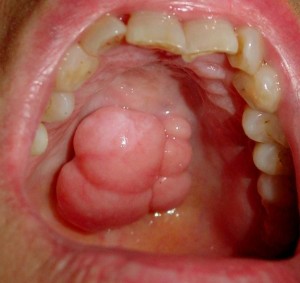Torus palatinus is a benign peculiarity wherein there is a bony outgrowth on the palate. It is a normal bump on the roof of the mouth. It is one of the most common exostosis involving the oral cavity. It is not cancerous, nor is it painful or sore. It comes in different shapes: nodular, spindle-like, lobular, or irregular. It is hard upon palpation and radiography shows opacity on this area due to the bone’s density. Since it is normal, there is no symptom associated with it.
Torus Palatinus Causes
 Genetic and ethnic factors: Development of torus palatinus in parent/s poses a 40-64% chance that their offspring will have it too. If neither of the parents has it, there is a 5-8% chance that a child will have it. Torus palatinus occurs in 20% of the general population. Torus mandibularis occurs in 6-40%.It mostly appears after puberty. It is generally seen among adults. For children in 5-15 age groups, there is 30.9% occurrence and it was shown that females are more likely to develop it. Torus palatinus is more common among females. Torus mandibularis is more common among males. Torus palatinus does not need to be treated since its essential features appear to be normal. It is simply an anatomical variance that does not affect everyone of us. Surgical removal offers a solution if torus palatinus causes a problem in the placement of dentures or dental prosthesis.
Genetic and ethnic factors: Development of torus palatinus in parent/s poses a 40-64% chance that their offspring will have it too. If neither of the parents has it, there is a 5-8% chance that a child will have it. Torus palatinus occurs in 20% of the general population. Torus mandibularis occurs in 6-40%.It mostly appears after puberty. It is generally seen among adults. For children in 5-15 age groups, there is 30.9% occurrence and it was shown that females are more likely to develop it. Torus palatinus is more common among females. Torus mandibularis is more common among males. Torus palatinus does not need to be treated since its essential features appear to be normal. It is simply an anatomical variance that does not affect everyone of us. Surgical removal offers a solution if torus palatinus causes a problem in the placement of dentures or dental prosthesis.



